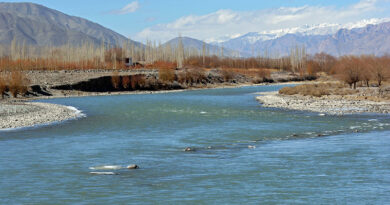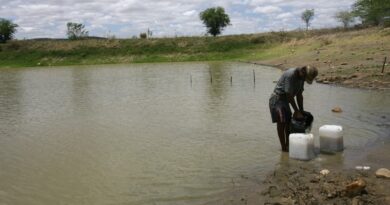Indian banks seem unprepared for extreme climate change events like droughts, floods

Despite India facing severe threat from extreme climate change events like droughts, floods, changing rainfall patterns and heat waves, the Indian financial sector, particularly the banks in the country, seem to be failing to respond adequately to the disruption that climate change will pose to their operations and profitability, a recent analysis has found.
Researchers at the Bengaluru-based think tank Climate Risk Horizons have, in a recent analysis, taken up critical issues like the state of preparedness of banking sector to adapt to an Indian economy whose foundation will undergo significant changes in the wake of climate change.
Numerous studies have projected the impact on Indian economic growth and GDP from “business as usual” and continued climate inaction. The World Bank estimates a 2.8 per cent annual hit to India’s GDP by 2050, said ‘Unprepared: India’s big banks score poorly on climate challenge’ released recently.
“Deloitte Economics Institute estimates that an emissions pathway consistent with a 3°C temperature increase would lead to an annual loss of 3 per cent of GDP from now till 2050 and lost economic potential of $35 trillion by 2070. The think tank Overseas Development Institute estimates that India may have already lost 3 per cent of its GDP due to climate change. Other studies have made more dire projections”, the report noted.
As these changes unfold, what role will the Indian financial sector play? Will banking institutions be mute bystanders rushing to catch up to drastic changes in the energy, transportation, manufacturing, and agricultural sectors?, the report posed.
Have they started to re-align their decision-making processes to aid in the necessary transformation of energy systems, or do they remain reliant on processes that are based on a ‘past as prologue’ mindset? Which banks are winning the race to put in place structures to assess and mitigate their own financial risk? Have banks begun to institute measures to ensure their own operations and portfolios are consistent with India’s official goal of carbon neutrality by 2070?
To answer some of these questions, and provoke discussion, debate and action, Climate Risk Horizons (CRH) said it undertook an analysis of the 34 largest scheduled commercial banks by market capitalization (12 public sector, 18 private sector, and four small finance banks) on the Bombay Stock Exchange (BSE) representing Rs 26.81 trillion (or, about $354 billion) as on March 31, 2021. In terms of market cap of the banks assessed, 78 per cent were from the private sector, 20 per cent from the public sector and 2 per cent from the small finance banking sector.
The results show that all the analyzed institutions — in effect, the cream of India’s banking sector—are currently unprepared to respond to the climate crisis, particularly when it comes to incorporating climate-related financial risks into routine decision making and strategizing, the report noted.
“None of the banks have undertaken forward-looking assessments like climaterelated scenario analyses or climate stress testing to gauge the resiliency of their portfolios. Only three of the 34 banks have started building internal capacity to do so”, the report said, adding that only seven banks have policies that exclude lending/services to entities credibly involved in deforestation, human rights violations, and biodiversity loss, etc. However, exclusion policies are limited to a standard of illegality, rather than a more progressive ethical standard.
Also, only eight of the 34 banks have a specific climate/ESG-related risk management process at the board level and 26 banks do not even disclose the most basic environmental indicators, i.e., scope 1 and 2 greenhouse gas emissions. Only six banks had their operational greenhouse gas emissions independently verified by a third party.
“The fact that 29 of the 34 biggest banks in India have scored less than 10 out of a maximum of 20 points should be seen as a blinking red warning light. Collectively, these 29 institutions represent a market cap of Rs 11.85 trillion as on 31 March 2021. This collective inaction is a stark reminder of potential long-term damage to the Indian economy from financial institutions that are asleep at the wheel when it comes to addressing the risks from climate change. This also underlines the need for corrective action from regulatory agencies such as the Reserve Bank of India”, suggested the report.
The Climate Risk Horizons report, among other things, recommended that banks should build their capabilities to undertake scenario analyses that test their resilience to climate related changes, either due to physical risks caused by the climate crisis, or transition risks caused by economic changes in response to the climate crisis. “This is a nascent field globally; the sooner the Indian financial sector starts to build its capacity in this field, the better prepared it will be for the future. Further, banks should disclose underlying material business impacts by conducting multiple scenario analyses using different climate scenarios”.
“Indian banks need to learn from a growing international body of work by joining various partnerships/associations with national/international climate initiatives such as UN Principles of Responsible Banking, etc. Also, a climate-related risk identification and process for subsequent management under Board oversight is essential for any financial institution”, the report added.



